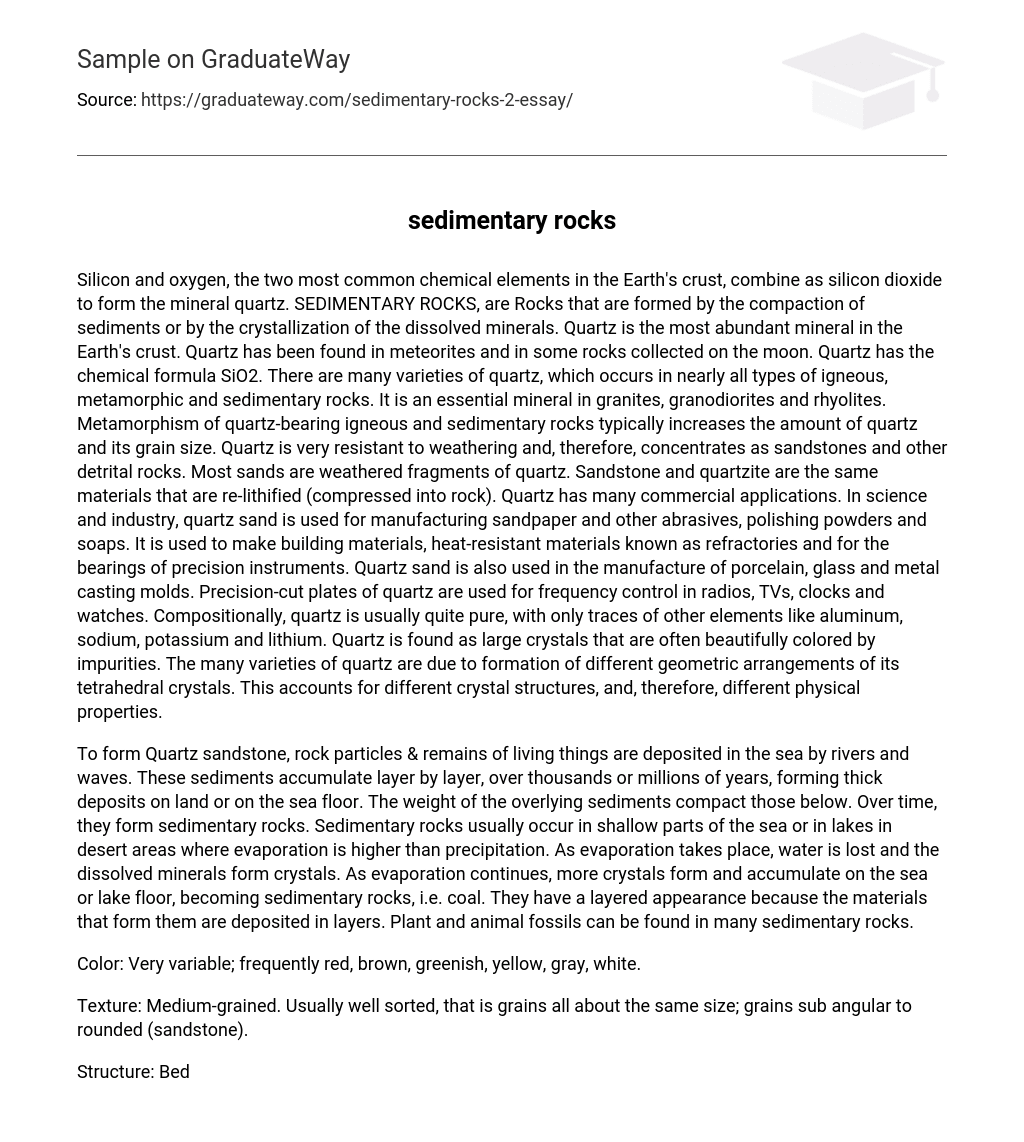Quartz is the most abundant mineral in the Earth’s crust, forming when silicon and oxygen combine. These two elements are the main components of the Earth’s crust. Sedimentary rocks can form by compacting sediments or crystallizing dissolved minerals. Quartz, with its chemical formula SiO2, has been discovered in both the Earth’s crust and meteorites as well as certain moon rocks.
Color: The color of this object can vary widely, from red, brown, greenish, yellow, gray to white.
Texture: The rock typically has a medium-grained texture that is generally well sorted, indicating consistent grain size. In sandstone, the grains can range from sub angular to rounded.
Structure: Bedding is characterized by current bedding, ripple marks, graded bedding, and the possible presence of concretions and fossils.
Mineralogy: Quartz is the main component, often found with feldspar, mica, or other minerals. The particles can bond through silica, calcite, or iron oxides.
Field relations: Sandstones are often found with other types of sedimentary rocks, whether they are formed in aqueous environments (usually the sea) or as deposits blown by wind in arid continental regions. In desert settings, sandstones often have a red color and their grains are usually round and smooth.
Quartz is present in different types of rocks, including igneous, metamorphic, and sedimentary rocks. It has a significant impact on granites, granodiorites, and rhyolites. During the process of metamorphism, quartz tends to increase in both quantity and size within these rocks.
Quartz exhibits exceptional resilience to weathering, leading to its abundance in sandstones and other detrital rocks. The majority of sand consists of fragmented quartz that has undergone weathering. Sandstone and quartzite are the re-lithified forms derived from these materials. Furthermore, quartz offers numerous applications in commerce.
Quartz sand serves multiple purposes in science and industry, including its use in manufacturing sandpaper, abrasives, polishing powders, and soaps. It is utilized for the production of building materials, refractories, and precision instrument bearings due to its heat-resistant properties. Additionally, quartz sand is employed in the manufacturing of porcelain, glass, and metal casting molds. Moreover, precision-cut quartz plates find application in frequency control for radios, TVs, clocks, and watches.
Quartz is typically composed of primarily pure substances, but may contain small amounts of aluminum, sodium, potassium, and lithium. Its large crystals often display attractive colors as a result of impurities. The various types of quartz arise from the formation of distinct geometric configurations within its tetrahedral crystals. These variations in crystal structures give rise to differing physical characteristics.
To create Quartz sandstone, rock particles and remnants of organisms are deposited in the ocean by rivers and waves. These sediments gradually accumulate, layer upon layer, for thousands or millions of years, resulting in substantial deposits on land or the ocean floor. The weight of the sediments above compresses those below, eventually forming sedimentary rocks. These rocks commonly occur in shallow ocean areas or desert lakes with higher evaporation rates than precipitation.
During the process of evaporation, water evaporates and the dissolved minerals transform into crystals. As evaporation persists, additional crystals develop and accumulate on the sea or lake floor, ultimately creating sedimentary rocks such as coal. These rocks possess a stratified appearance due to the layering of the materials that comprise them. Numerous sedimentary rocks contain plant and animal fossils.





